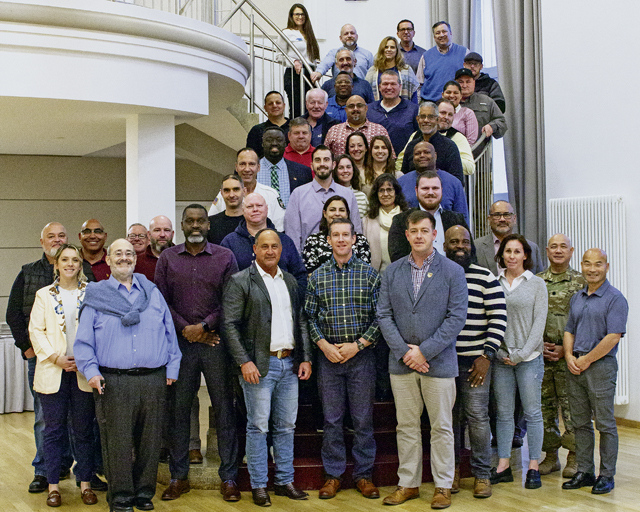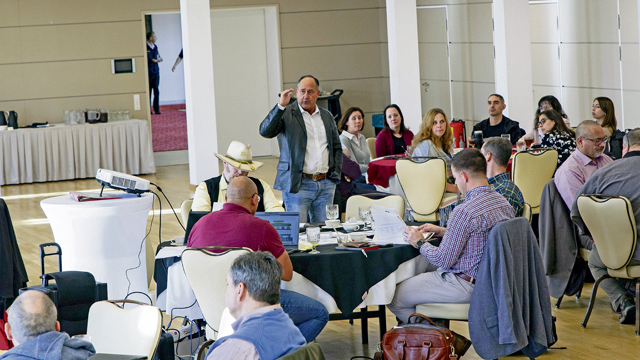
Leaders and team members from various U.S. Army Garrison Rheinland-Pfalz directorates gathered for an Installation Planning Board development event at the Rheinlander Community Center, Nov. 1.
The IPB is an event that includes an audience with general officers, the Installation Management Command-Europe regional director and others. The board is a forum for identifying, assessing, and creating a unified understanding of installation-wide planning requirements for the upcoming year.
The board’s purpose is to develop an Integrated Priorities List. The list supports improving installation services and programs in consideration of the mission support partners, tenant units and non-government organizations. To help build the list, the team used the SMART (Specific, Measurable, Attainable, Relevant, Time-bound) strategy/analysis for each line of effort presented.
“The Installation Planning Board is the principle executive forum for the integration of all installation support efforts and alignment of tenant activities with the Senior Commander’s Vision,” explained Tommy Mize, IMCOM-E Regional Director, in a message to garrison leaders.

The “heavy lift” of the IPB falls upon the garrison’s Plans, Analysis and Integration Office and its leader Charles Azotea. Azotea said gathering the brainpower of the garrison’s leadership team, as well as deputies and division chiefs, helped lead to productive ends.
“We were fortunate to have all those folks in the room,” Azotea said. “The IPB will go through many iterations before we present to our audience, but the importance of getting this input and crosstalk now makes a different down the road.”
The successful execution of action plans tied to the IPL is considered an indicator or measure of how well a garrison is performing.
Paul Hossenlopp, USAG Rheinland-Pfalz deputy to the garrison commander, talked about the importance of using a day to have garrison directors and staff leads focus on IPB development. He said the workshop, which included about 35 staff members, highlighted the value it brings to the organization as well as the value achieved through team-oriented collaboration among the garrison directorates.
“What we did today as a group is a great guide for the way forward to the IPB, but now we have some work to do to articulate it the right way,” Hossenlopp said.
Participants in the workshop echoed the DGC’s sentiment.
“The IPB is one of three or four big muscle movements that we make each year to ‘set the garrison,’ and that enables our part as a garrison to ‘set the theater,”’ said Jason Tudor, executive officer, USAG Rheinland-Pfalz. “Getting this team together to think through what’s of most value to our Soldiers, family members and civilians is important.”
USAG Rheinland-Pfalz Command Sgt. Maj. Raymond Wrensch, who assumed responsibilities of the garrison Oct. 19, said the event helped him tremendously in understanding what the organization needs to focus on.
“There are a lot of things that I am learning every day about garrison operations,” he said, “and our goal is to make sure that the team has a shared understanding of what we are trying to communicate, to ensure everything will go smooth later on.”
In his closing remarks, Col. Reid E. Furman, USAG Rheinland-Pfalz garrison commander, thanked everyone and said that the IPB will set up the garrison for success.
“For everything we do as a garrison, we do mission planning, follow a process, and then operationalize it,” he said. “I want to thank everybody who attended today for their cross-talk, engagement, and for the ownership in this process.”







